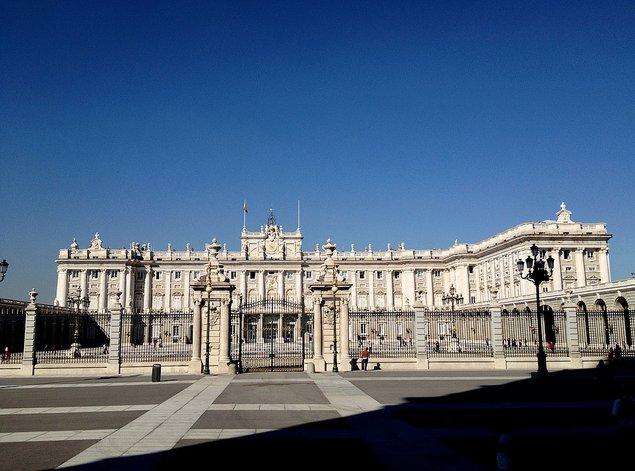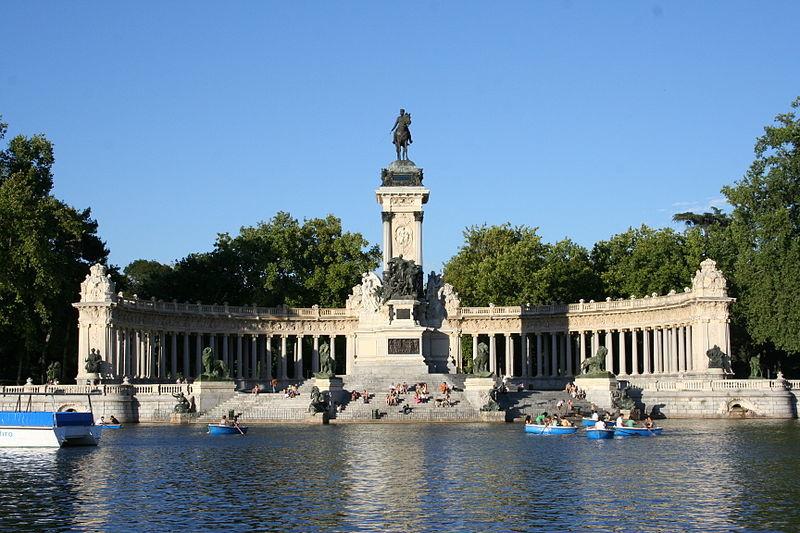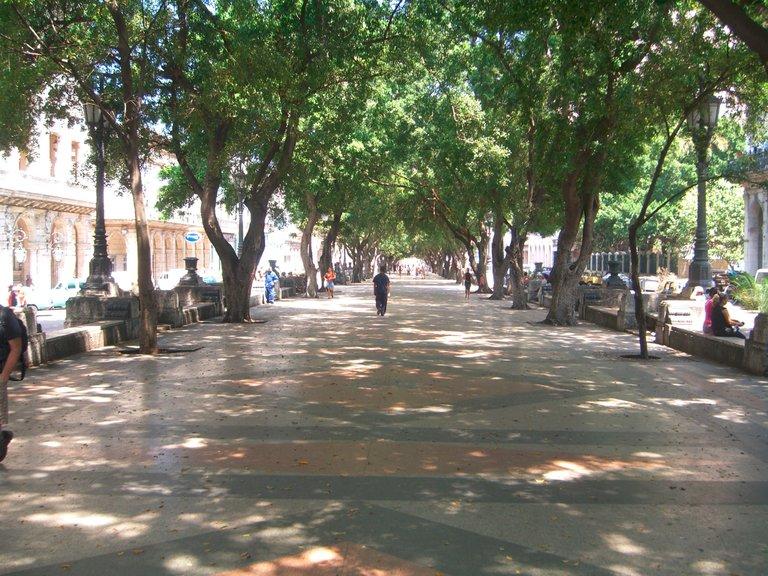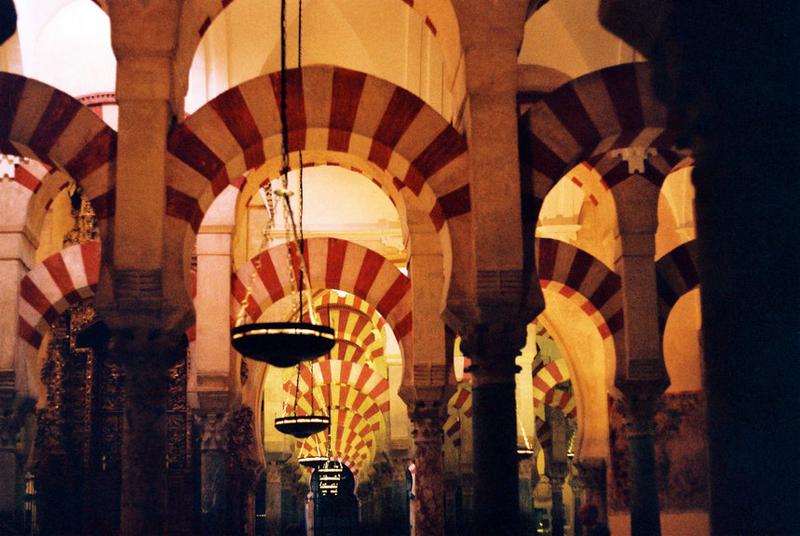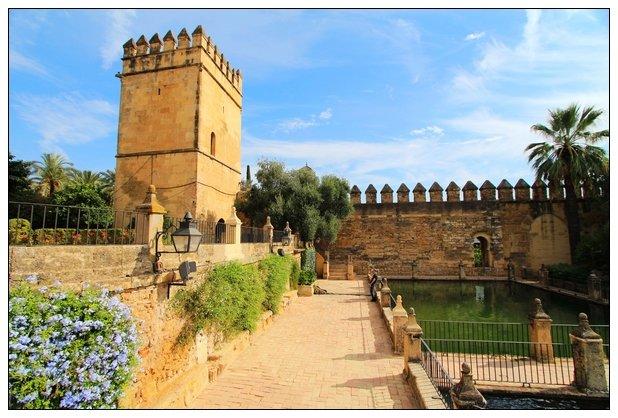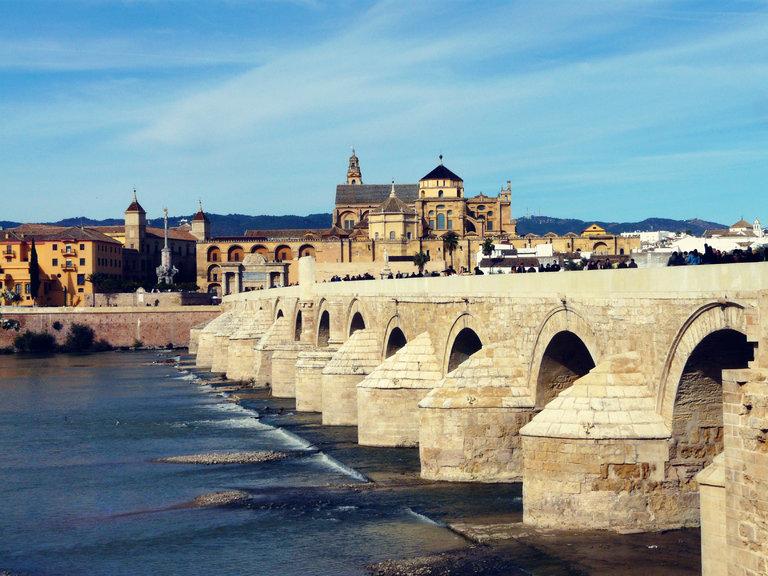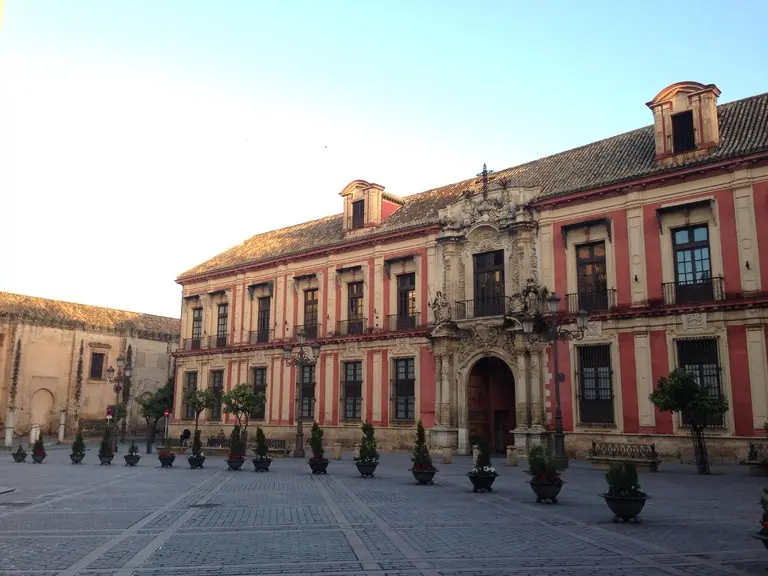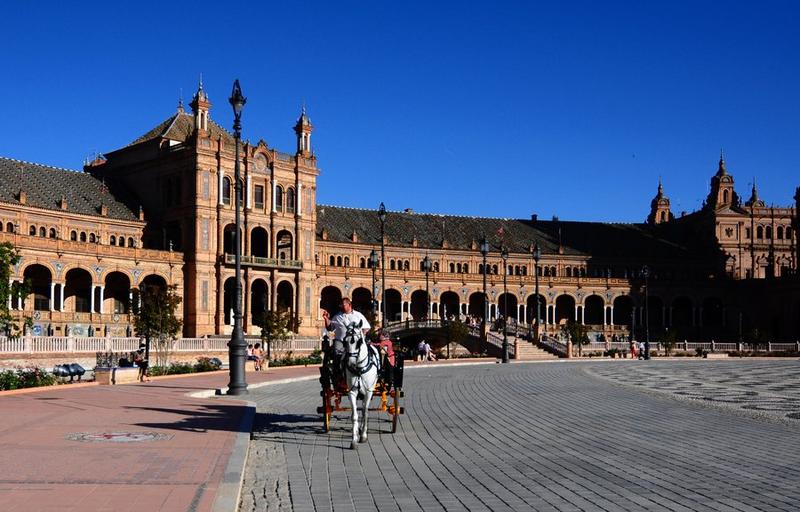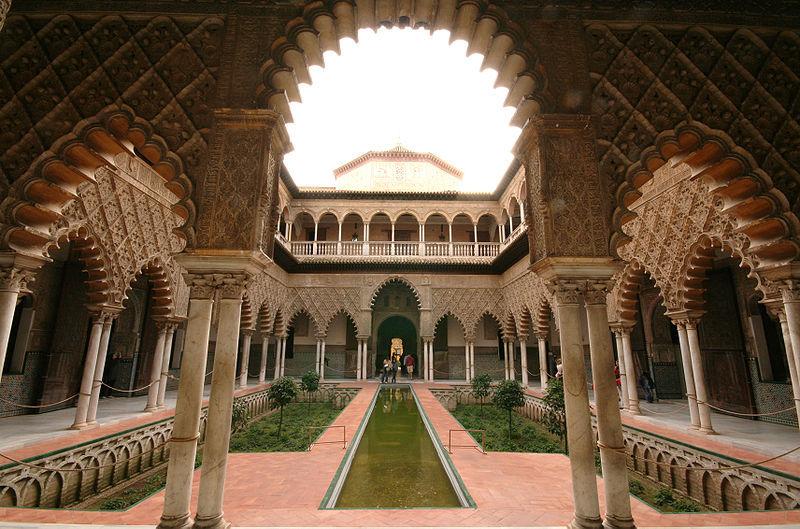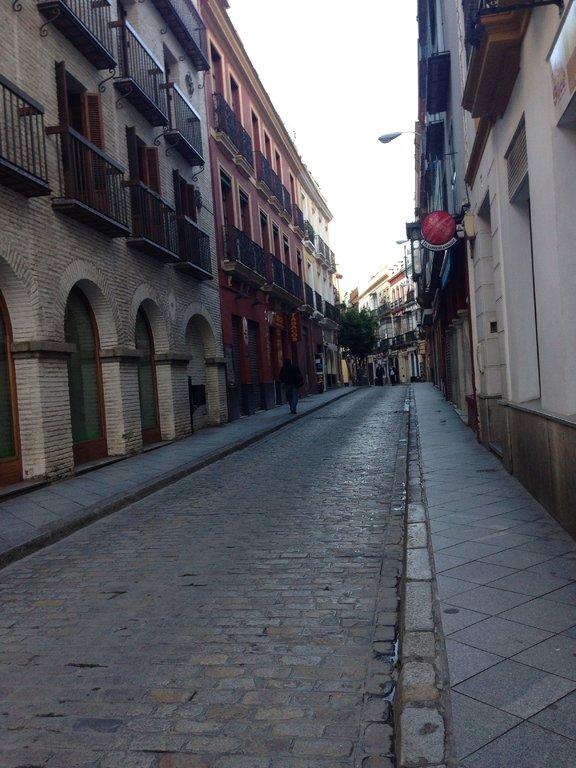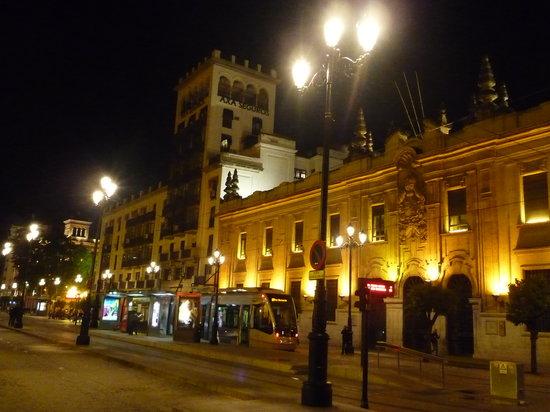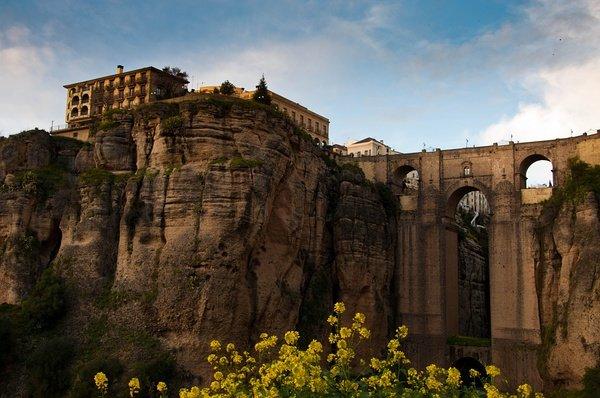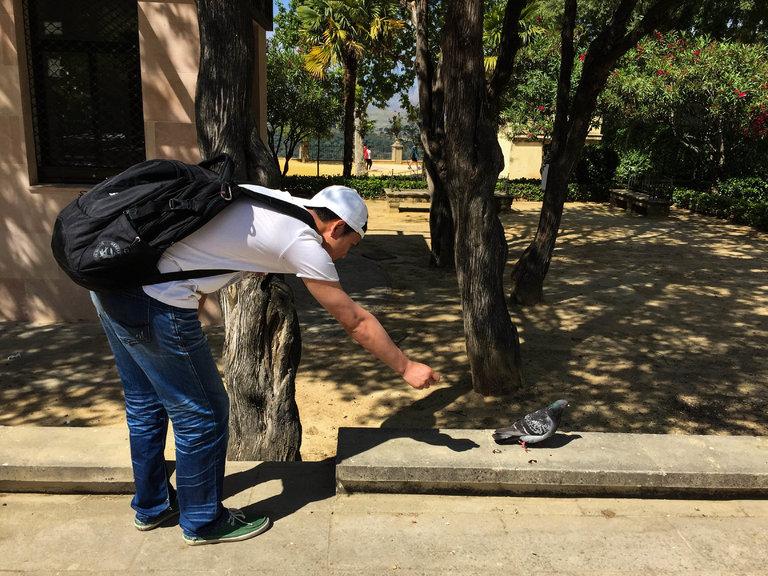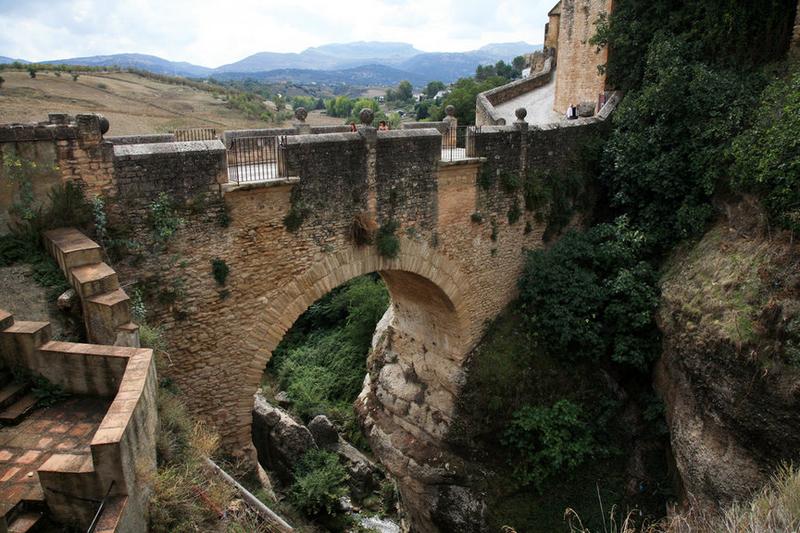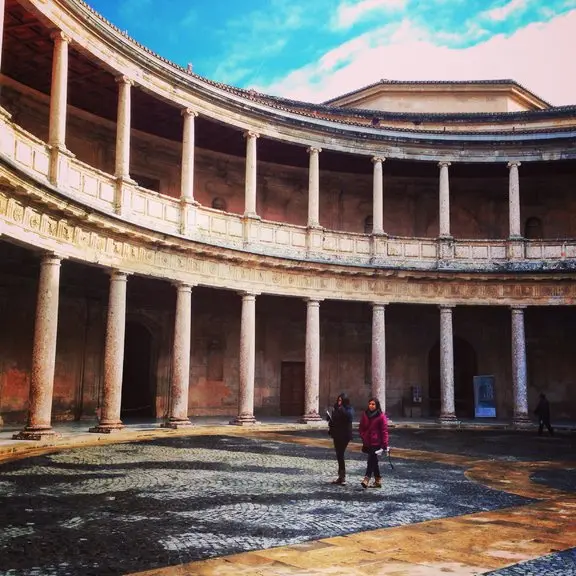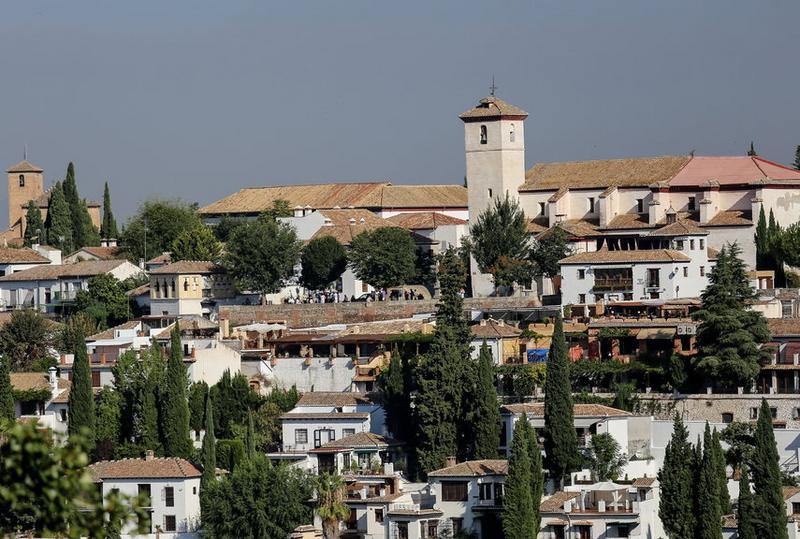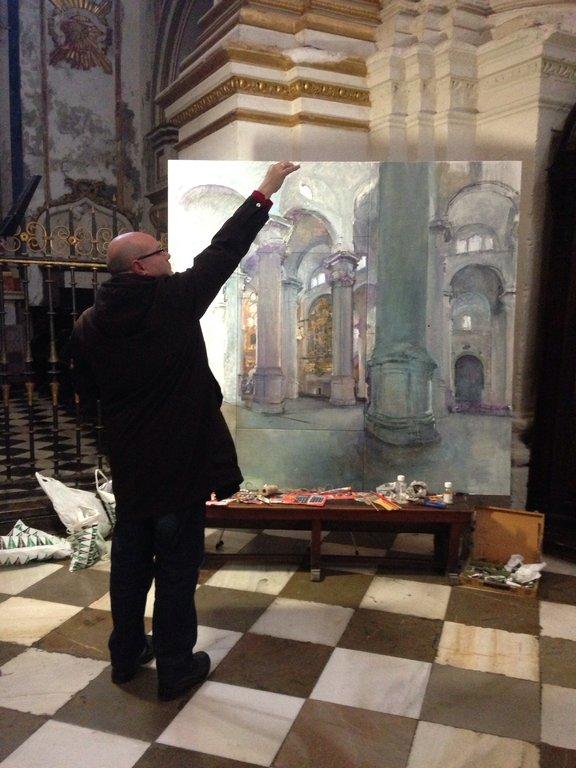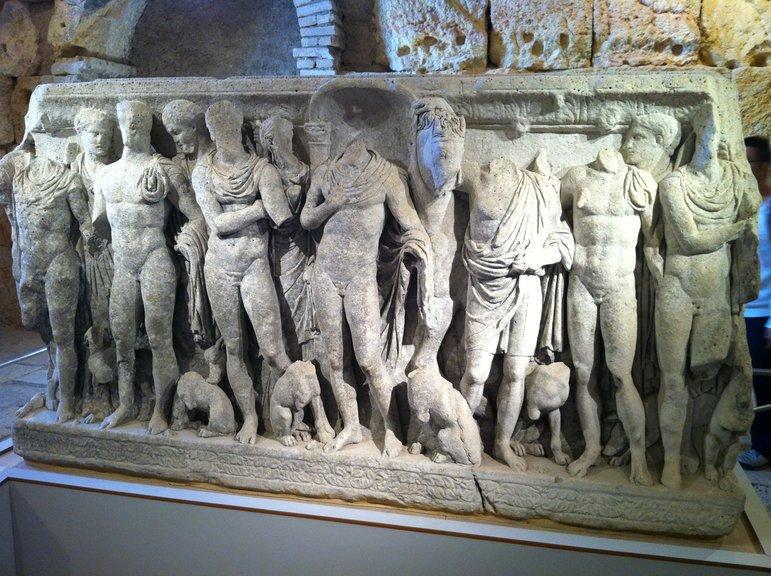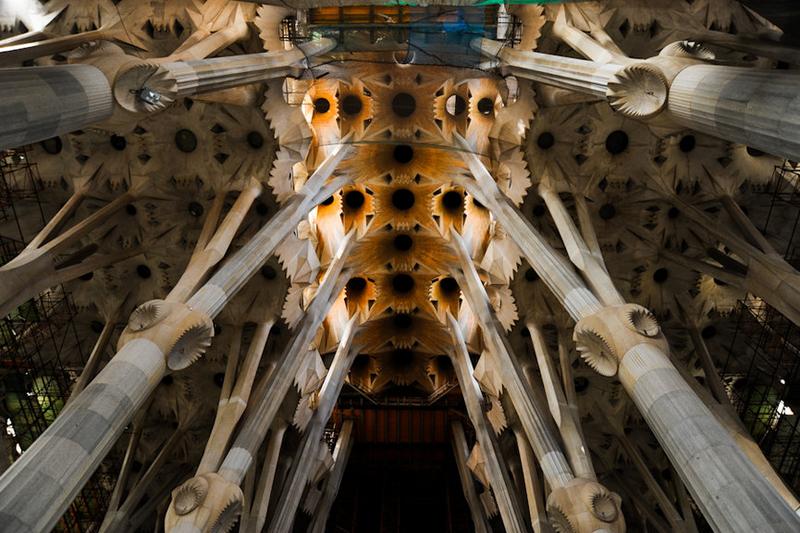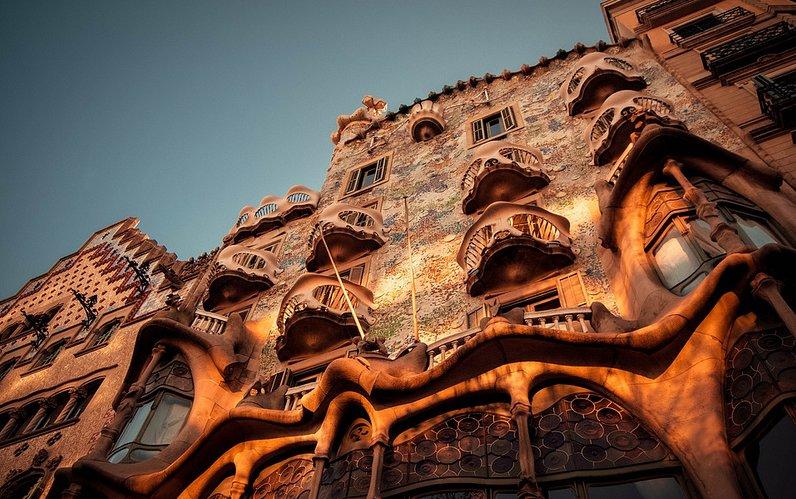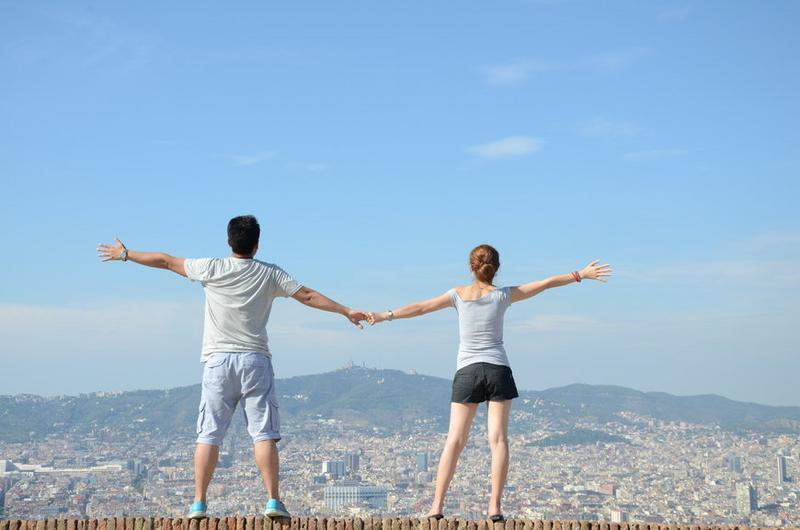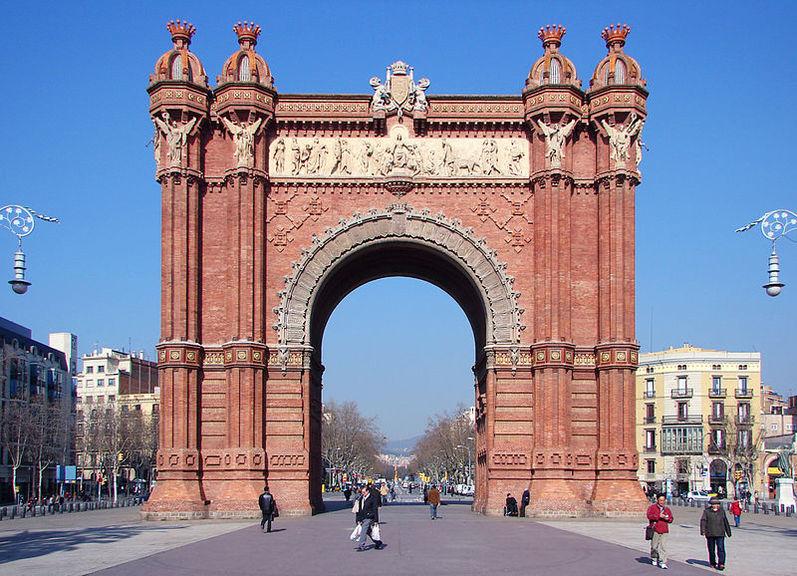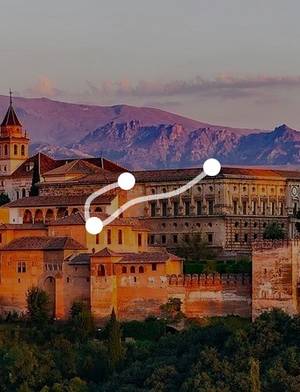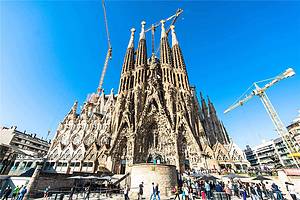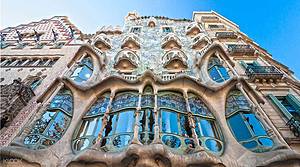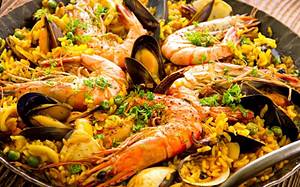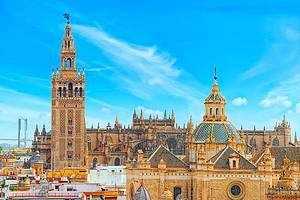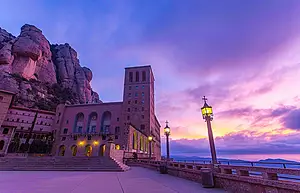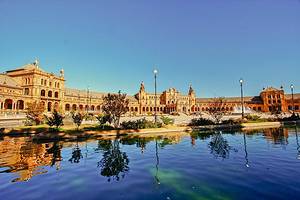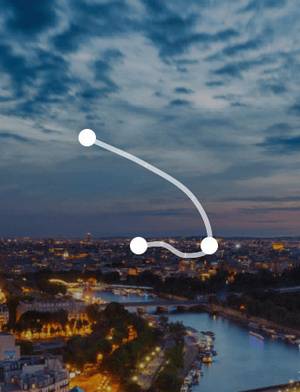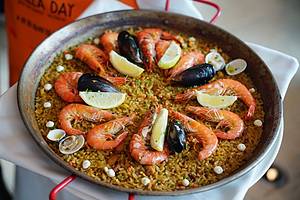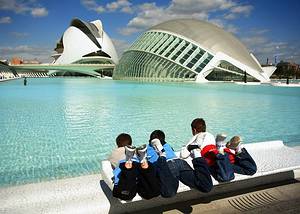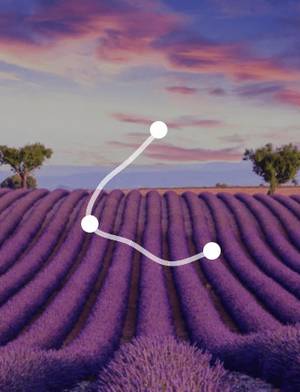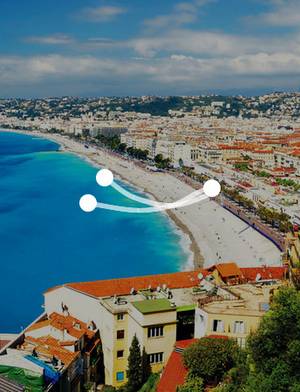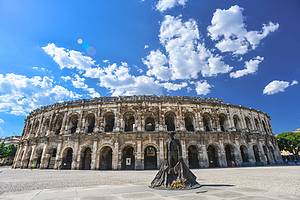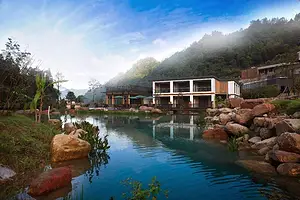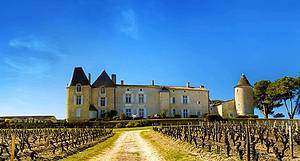Road trip through southern Spain and the coastline on the 11th
7 cities |
30 attraction(s) |
total distance 2446
km
 TIPS
TIPS
Day1
Day2
Day3
Day4
Day5
Day6
Day7
Day8
Day9
Day10
Day11
Day1: Madrid
3 attraction(s) ·
11 km
2
The square originated as a city gate in 15th century Madrid, named Puerta del Sol because it faced the rising sun. The oldest building on the square is the former post office from the 18th century, which is now the Madrid Regional Government building. It was once the headquarters of national security during the Franco era, and the bottom half of the windows were where political prisoners opposing Franco's rule were held. Another important site on the square is the statue of Carlos III, a king of Spain during the Bourbon dynasty, who was born in Madrid and known for his efforts in developing public infrastructure in the city. The other attraction is the symbol of Madrid, the bear and the strawberry tree. The bear represents King Alfonso XI of Castile, who hunted a bear on the surrounding mountains, and the strawberry tree represents the abundance of wild strawberry trees in the area.
9
km
3
El Estadio Santiago Bernabéu
Visiting Real Madrid's home stadium, Estadio Santiago Bernabéu, is an absolute must for fans. If you happen to be here during the season, congratulations, you can buy a ticket and admire Real Madrid's exceptional skills. Bernabéu has a kind of magic that drives people crazy. Once you step inside, you will be filled with excitement. If you don't catch a match, don't worry, you can still tour the stadium, including visiting the trophy exhibition room, the president's office, the press center, the locker room, the player tunnel, and the bench where players sit on the sidelines.
Day2: Madrid
3 attraction(s) ·
8 km
1
Parque del Buen Retiro
Retiro Park, located in the center of Madrid, occupies an area of 118 hectares and has nearly 15,000 trees. It is a popular place for both travelers and locals to enjoy leisure time. The park was built in 1630 as a vacation spot for the king and has since been opened to the public. Notable attractions in the park include the Statue Avenue, Puerta de España (Gate of Spain), Rose Garden, Monumento a Alfonso XII (Monument to Alfonso XII), and Palacio de Cristal (Crystal Palace).
4
km
2
The Prado Museum is one of the best museums in the world and is one of the most visited attractions in Madrid. It houses the finest works of Spanish art from the 16th to the 19th century, including works by Velázquez, Goya, and Greco, as well as a large collection of works by foreign Renaissance painters such as Tiziano from the Venetian school, Rubens from the German Baroque school, and Hieronymus Bosch from the Dutch Surrealist movement. The museum currently has a total collection of 27,509 artworks, including 7,825 oil paintings, which is quite impressive.
Unlike other large European museums like the Louvre in Paris and the National Gallery in London, which collect works from various eras and different artistic styles, the Prado Museum initially received donations of artworks from the royal family who were art enthusiasts, so the styles are more similar. The museum was commissioned to be built by King Carlos III in 1786 and opened to the public in 1819. Famous artists such as Monet, Renoir, Lautrec, Picasso, Matisse, and Dali have visited the museum and have been influenced by its painting styles.
4
km
Day3: Madrid > Cordoba
3 attraction(s) ·
398 km
1
Paseo del Prado is a major thoroughfare in Madrid, Spain. It extends north from Plaza de Cibeles to Plaza de Carlos V, with a midpoint at Plaza de Canovas. The Ritz Hotel and Palace Hotel, both five-star accommodations, are located along Paseo del Prado. The southern end of Paseo del Prado forms the southern axis of the city, while the area north of Plaza de Cibeles is known as the Paseo de Recoletos and Castellana Avenue.
395
km
2
The Mosque-Cathedral of Córdoba, a World Heritage Site, was originally built in the 8th century. It is a place of pilgrimage for Muslims in Spain, second only to Mecca and Jerusalem. After the Muslims occupied Córdoba, they converted the Gothic-style Catholic church into a mosque. When Christians regained control of Córdoba, they rebuilt the mosque. This Moorish and Spanish architectural blend silently tells the story of its turbulent history.
4
km
3
Alcazar de los Reyes Cristianos (Alcazar of Cordoba)
A medieval castle located in Cordoba, it was one of the main residencies of the Spanish Catholic Monarchs who rewrote history. Later, in 1810, it became a military camp for Napoleon, and in 1821, it became a prison. This castle, which has experienced countless storms, was opened as a tourist attraction in the 1950s. Built by Alfonso XI in 1328, the castle features a Moorish-style palace and exquisite gardens. In the 15th century, Catholic monarchs built their own palace here and launched the conquest of Granada. In 1483, Boabdil was imprisoned here, and for nearly 300 years, Alcazar Palace served as a base for religious judgments.
Day4: Cordoba > Sevilla
3 attraction(s) ·
142 km
1
The ancient Roman bridge still in use today was originally built in the 1st century. It went through different degrees of renovation from the 13th to the 19th century. The bridge is constructed with huge stone and has 16 arches. At sunset, the ancient Roman bridge is one of the most beautiful views in Cordoba. Standing at the southern end of the bridge, the neighboring mosque and the quaint bridge complement each other.
140
km
2
The Sacristy of the Main Chapel of Seville Cathedral is an attached building to Seville Cathedral, completed in 1543. The arch-shaped entrance is uniquely decorated with carvings of a safe, representing different types of food and dishes. The interior decoration of the building is the most beautiful in the cathedral.
3
km
3
The Plaza de España is located on the edge of Maria Luisa Park. It was originally designed and built by the Sevillian architect Aníbal González for the Ibero-American Exposition of 1929. It is a semi-circular square with a diameter of 200 meters, formed by three buildings, with a continuous row of buildings surrounding the edge of the square. It can be reached through a canal with many beautiful bridges. In the center of the square, there is a large fountain. Today, the square is mainly occupied by government buildings. The walls of the square have many niches, each representing a different province of Spain. Visitors can take photos representing each province. Different architectural styles of Spain can also be seen in the square, including Gothic, Moorish, and silversmith styles. Visitors interested in Seville's archaeology or folklore can also visit the archaeological and folklore museums located in the buildings of the square.
Day5: Sevilla
2 attraction(s) ·
4 km
1
Alcázar de Sevilla
The Palace of Seville is the oldest royal palace in Europe and was designated as a World Heritage site in 1987. It was originally a Moorish castle in the Middle Ages, and later merged Islamic, Christian, and Gothic styles, representing the architectural styles of Andalusia. The Palace's Palacio de Pedro I, Palacio de Carlos V, and the Courtyard of the Maidens are all worth a visit. In addition to the buildings, the Palace's gardens also blend both Arabic and Gothic styles, making it visually stunning. It is also the filming location for the Gardens of the Water in the TV series "Game of Thrones."
4
km
2
Beautiful tourist attraction, the central cross sculpture was built in 1692 and is one of the most exquisite wrought iron sculptures in Seville.
Day6: Sevilla > Ronda
3 attraction(s) ·
129 km
1
Seville City Hall is one of the four government institutions of Seville, Spain. This historic building is one of the most notable examples of Cordoban architecture. Facing St. Francis Square to the east and New Square to the west, Seville City Hall was initially constructed by Diego de Riano in the 15th century. It is adjacent to the Franciscan Monastery and features two floors adorned with reliefs depicting historical and mythical themes, portraying the city's founders, Hercules and Caesar.
129
km
2
The magnificent new bridge spans the El Tajo Gorge and was completed in 1793. It is rumored that the architect of the bridge, Martín de Aldehuela, accidentally fell to his death while carving the date on the side of the bridge. In Hemingway's novel "For Whom the Bell Tolls," it tells the story of the residents of Ronda beating "fascists" with sticks and hammers and throwing their bodies off the cliff. Seeing photos of the bridge is not enough to truly appreciate the awe-inspiring experience it provides. The unique location of Ronda contributes to this - the bridge stands at a height of 98 meters, equivalent to the height of a 30-story building, with the abyss below and white houses built on the edge of the cliff. Walking along the path next to the bridge, you can see the deep valley and the houses within, a picturesque scene that cannot be captured in a flat photo. There is also a small museum at the bottom of the bridge that tells the history of the new bridge, which is worth visiting if interested.
1
km
3
Taholin shady walking trail is located north of the bullring, where you can enjoy lush park scenery and breathtaking cliff views.
Day7: Ronda > Granada
3 attraction(s) ·
208 km
2
Alhambra
The name of the Alhambra Palace comes from Arabic and means "the red fortress". It is a representative of Arab-style palace courtyards and is located on the Nevada Mountains outside Granada. As a perfect combination of Islamic architecture and gardening, the Alhambra Palace was included in the World Heritage List by UNESCO as early as 1984. The main areas to visit in the Alhambra Palace include the Alcazaba fortress, the Nazarí Palaces, the Generalife Palace, the Mosque Baths, and the Gardens.
16
km
3
The Mirador de San Nicolás, located in the oldest district of Albaicín in Granada, was originally a fortress built by the Moors and later served as a sanctuary for the Moors and Jews after the Christians reconquered the area. From a distance, the entire hill looks like a white village. The most famous attraction here is the Mirador de San Nicolás, which is adjacent to the Alhambra. From this viewpoint, you can enjoy a panoramic view of the city, especially during sunset when the light illuminates the entire city, making you feel like you're in a postcard.
Day8: Granada > Tarragona
2 attraction(s) ·
797 km
1
The construction of the cathedral began in 1523 and was not completed until the 18th century (the tower part is still unfinished). It incorporates various styles including Gothic, Renaissance, Mudejar, and Baroque, through modifications made by several designers.
797
km
2
Tarragona Cathedral (Basilica Metropolitana Primada de Tarragona) is located at the highest point of Tarragona, overlooking the beautiful old town. Some parts of it were built in the 12th century, and there is a museum beyond the beautiful cloister.
Day9: Tarragona > Barcelona
2 attraction(s) ·
103 km
1
The National Archaeological Museum of Tarragona can provide you with a detailed understanding of Roman rule in Spain. Its collection is very rich.
103
km
2
The Sagrada Familia is the symbol of this city, attracting all the attention of those who come to this city. Inspired by nature, such as caves, mountains, flowers, and animals, the overall design of the Sagrada Familia is still incomplete due to lack of funds. Only tickets and donations are used to cover the construction costs. The top of the towers is covered with scaffolding. It is said that the Sagrada Familia, which has been standing for a hundred years, will be completed in 2026. Despite this, the people of Barcelona are not anxious or impatient; instead, they wait calmly and patiently. In 1926, on a summer night, Gaudi passed away in a car accident, and the Sagrada Familia was his final gift to the world. After that, Gaudi rests in the underground crypt of the Sagrada Familia, which he designed and is still unfinished, quietly waiting for the day this great project is completed.
In 1872, Josep Maria Bocabella, a bookseller from Barcelona, returned from a trip to Italy and conceived the idea of building a penitential church where people could pray to God and seek forgiveness. The construction of the Sagrada Familia began in 1882 and was taken over by Gaudi at the age of 31 in 1883. He designed the entire church as a "Bible" that could be carved in relief, depicting the birth of Jesus, his passion, and the glory of God on the three facades of the church.
The Passion facade is used to convey the pain that Jesus suffered under suffering and torment. It is entered through the carved door of the Passion with coded inscriptions. The interior design of the church is unique, consisting of curves and surfaces, and various combinations of spirals, cones, and parabolas create a rhythmic and dynamic architectural style. All the columns resemble tree trunks, branches, and tree eyes, inspired by nature. The main body of the church is predominantly Gothic in style but exhibits the "Gaudí touch." Plain, pale yellow and milky-white columns and walls create one wonderful space after another, outlined by black iron curves. Slow down, appreciate it carefully, and the colors become a subtle backdrop. Looking up at the top of the church, sunlight shines through several small openings, casting shadows, and tall tree trunks extend branches to support the towering spires. Stained glass windows reflect colorful flowers, and the entire church is filled with a dreamlike palette, like a kaleidoscope world.
Take the elevator of the Nativity facade and climb a few more steps to reach the viewpoint at the top of the church. The beautiful views of Barcelona unfold before your eyes. The Tower of Jesus, 170 meters high, is adorned with vibrant Venetian mosaic, making it the tallest building in Barcelona. With its eight completed spires reaching the sky, its towering presence can be admired from anywhere in the city.
Day10: Barcelona
4 attraction(s) ·
21 km
1
The interior design of the Batllo House also adheres to Gaudi's consistent style, with no straight lines and angles, only soft wavy curves. Every door, door handle, and chair is designed to conform to the human body's curves, and the small details throughout the house are awe-inspiring. The elegant wooden staircase specially designed by Gaudi for the Batllo House leads from the ground floor to the main hall on the second floor. The top decoration of the staircase railing is exceptionally exquisite, with a metallic thin sheet wrapped around an orange glass sphere. The ceiling of the main hall has a smooth surface that swirls outward, and the large windows with movable upper and lower frames provide a view of Gracia Avenue.
The design inspiration for the building's courtyard comes from the deep sea. In order to create a gentle light contrast, Gaudi used 15,000 blue tiles in five different shades, with the color becoming darker as it gets closer to the top of the building, as if gradually sinking into the depths of the ocean from the shimmering sea surface. In contrast to the colorful decorations and designs of the other floors, the loft's walls are in pure white tones, with a hanging chain arch structure as the basic architectural framework, reminiscent of the chest and ribs of a giant animal, while also providing temperature regulation for the entire building. The construction of the Batllo House came from a architectural design competition in Barcelona, inspired by the folk story of Saint George slaying the dragon. The large floor-to-ceiling windows on the second floor and the small decorative exterior columns resemble dragon's teeth. The design and arrangement of the roof tiles represent the dragon's fin, and the roof, with its scaled arches, resembles the dragon's back. The tall cross-shaped tower on the roof is like the holy sword inserted into the dragon's body. Another design inspired by natural objects is the spiral staircase leading to the roof. Gaudi favored this curved and natural rhythmic shape and gave the rooftop platform of the Batllo House a unique style. The surface of the chimney and ventilation ducts is made up of fragmented ceramic mosaics, which is a concrete manifestation of Gaudi's unique artistic style.
4
km
2
Park Güell, also known as Güell Estate, is an early work of Gaudí. It has a strong Oriental influence in the exterior, with windows designed for ventilation in desert-like regions, the use of bricks instead of stones in geometric wall formations commonly seen in Moorish-style architecture, and decorative ceramic tile accents. As part of Antoni Gaudí's works, it is listed as a UNESCO World Heritage site. Gaudí showcased his extraordinary talent in landscape planning, with the famous lizard sculpture at the main entrance and a surrealistic paradise of vibrant colors. His former residence, the pink house, is now a museum.
11
km
3
Montjuic Castle was built in the 17th century and is a military fortress with typical Barcelona garden architecture. The ancient watchtower on the site indicates its historical importance as a military location. Throughout history, it has served as a prison for political prisoners and as a site for executions. The castle now houses a military museum, showcasing weapons, flags, uniforms, and more from the 15th to 20th centuries. Standing in front of Montjuic Castle, one can enjoy panoramic views of the streets of Barcelona and the bay.
6
km
4
Gothic Quarter is one of the four districts in the old city of Barcelona. Many buildings date back to the Middle Ages and some can be traced back to ancient Roman times. The old cathedral and the royal palace in the historic center are still in use and well preserved. Highlights of the Gothic Quarter include the Santa Maria del Mar church and several restored palaces and mansions on Montcada Street. The area also features remnants of the Roman city walls. The Gothic Quarter is small and perfect for walking tours.
Day11: Barcelona > Madrid
2 attraction(s) ·
630 km
1
The Arc de Triomf in Barcelona, Spain, was built as the main entrance for the 1888 World Exposition. It is made of red brick and belongs to the Moorish Revival style. The front lintel of the gate is carved with the words "Barcelona rep les nacions" ("Barcelona welcomes the nations"), and the stone carving on the back lintel is called "Recompense".
630
km
2
Plaza Mayor, also known as Mayor Square, is the central square of the Spanish capital Madrid. It is located near the Puerta del Sol square and was built during the Habsburg dynasty. It has a rectangular shape, measuring 129 meters long and 94 meters wide, and is surrounded by three-story residential buildings with 237 balconies facing the square. It has a total of 9 entrances. The main building of Plaza Mayor is Casa de la Panadería (House of the Bakery), which serves municipal and cultural functions and is adorned with murals on its exterior walls.
